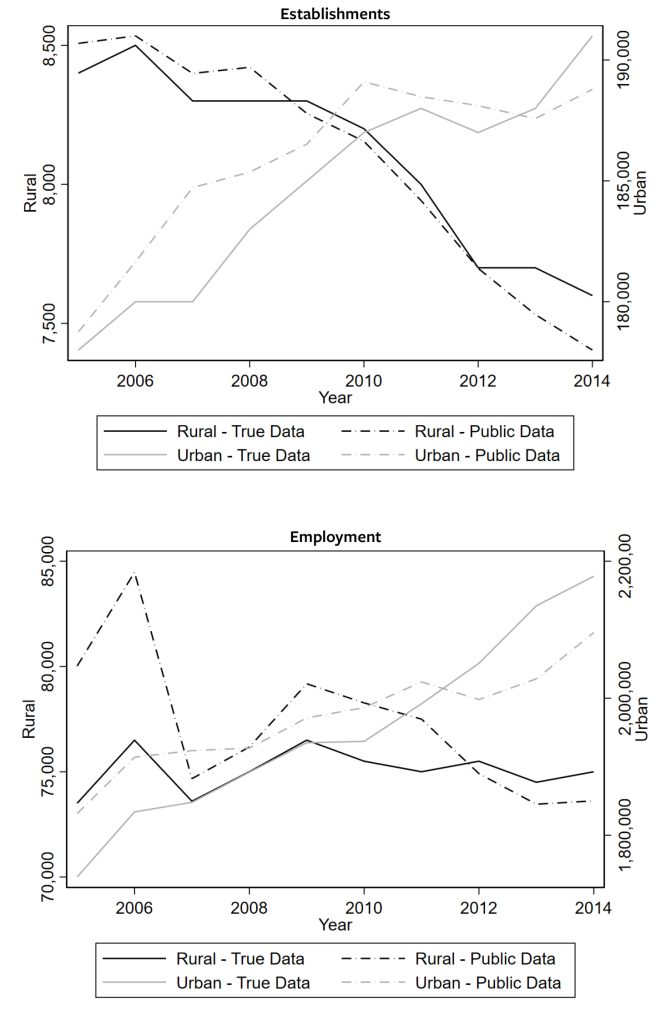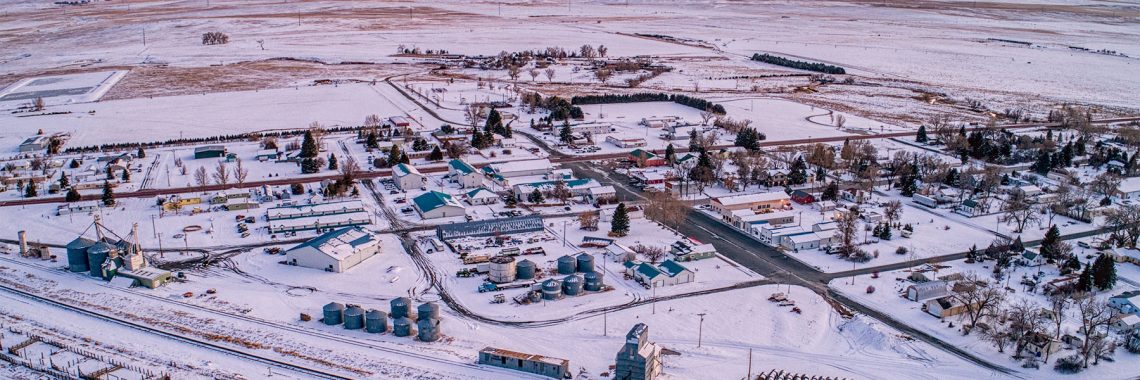Driving across rural America brings warm feelings of simplicity, beauty and serenity. Many of these communities, however, are just a shadow of their former selves from just a generation ago. Consolidation and concentration in agriculture have increased to the point where farms require less labor. At the same time, local markets are more globally entwined, and our once-local supply chains now stretch across states and continents. All this has changed the economic composition of our rural communities, and many are faced with declining per capita income, shrinking populations and most importantly, a feeling of hopelessness that seems to clash with an otherwise rich sense of community.
Revitalizing rural communities requires a better understanding of how to create economic opportunities, but economic development professionals agree that this is no small challenge.
Growing up in rural America, I was never bothered by these thoughts. I remember exploring lost logging roads, bucking hay and floating the river without concern. I may not be able to prevent these memories from fading with time, but I have devoted my career to preventing these places from fading from memory.
The challenges of data suppression
Because of reduced budgets and in an effort to maintain business and individual privacy, U.S. government statistical agencies are increasingly suppressing large portions of otherwise publicly available datasets. Unfortunately, the small sample sizes of rural communities and industries causes them to be disproportionately affected by suppressed economic data, which makes it difficult for economic development practitioners to understand the nuanced challenges they face. Using heavily suppressed data may even lead to inaccurate conclusions that could further harm rural communities. Indeed, our research has found that economic model estimates based on publicly available employment data may be biased by up to 82%, and we expect the higher privacy standards applied to data from recent years to cause an even larger bias.
The lack of reliable data becomes critical when a small town is assessing opportunities and challenges for local industries. For example, access to healthcare is a growing concern in the United States; however, there is a proportional lack of research on healthcare establishment location decisions, largely because of the lack of reliable data. This need for data and the issue of local data reliability is visible in Figure 1, which shows the differences in physician practices and physician employment across rural and urban areas in the United States using public and restricted-access data. Two observations stand out: First, the opposite trends between micropolitan and metropolitan counties; and second, the gaps between the public and restricted-access data trends.
Over time, the number of medical practices in rural counties has decreased, although the number of health care professionals working in medical practices in those counties has increased. This is caused by the consolidation of small, local physician practices into larger, regional healthcare facilities that are fewer in number and therefore less accessible to rural residents. Regardless of innovations such as telehealth, the data are clear—access to physical healthcare in rural counties is decreasing.
These trends are persistent, but in recent years, data suppression has created even larger disparities between public and restricted data, which prevents rural community leaders and local economic development practitioners from solving present-day challenges and exacts a real toll on economic development and the future of rural America.

The challenges of rural healthcare
What are we able to say about the locations of rural healthcare facilities when we can access the true data? First, we see a decline in the number of rural healthcare practices as shown in Figure 1. Second, we see patterns in the locations of new healthcare facilities, indicating that location decisions are being driven in part by economics. And while these decisions can make good economic sense, they also can create a catch-22 for rural residents.
For example, new hospitals are more likely to be built on the outskirts of urban centers where there is cheaper land and greater highway access. The way we pay for healthcare also influences the locations of healthcare facilities. Our research indicates optometry offices are less likely to be located in counties with higher shares of senior citizens and people with disabilities, likely due to the fact that Medicare does not cover routine eye exams and glasses, making rural optometry practices less profitable.
These negative effects worsen in rural counties with high shares of Medicare or Medicaid recipients. Access to physical healthcare providers such as physicians, dentists and hospitals decreases further, while access to ambulance services, outpatient mental health/substance abuse centers and home health services actually increases. Although the increase in these types of healthcare services may seem positive, they focus primarily on transporting patients to hospitals in urban areas, providing end-of-life care and treating substance abuse such as opioid dependency, which has hit rural communities particularly hard. None of these services include significant preventative or routine care.
Opportunities through rural-urban linkages
Despite the data challenges, researchers and economic development practitioners continue to identify opportunities for greater economic growth that could enable rural communities to attract some of the services they have lost. For example, if rural communities can tie themselves to the economic activity of cities, that symbiotic relationship may lead to more balanced growth, as a rising tide lifts all boats. We have identified three ways to do this: agritourism, data processing centers and food manufacturing. Agritourism encourages urban residents to visit and spend tourism dollars in agricultural communities that offer fresh food, clean air and scenic views. When data processing centers locate in rural areas, they save money on land, energy and labor, while boosting employment rates and per capita income. Food manufacturing facilities create similar outcomes when located up to 100 miles outside an urban center. Supporting these industries through forward-looking policies may lead to potentially fruitful economic development paths for agrarian and energy-centered rural economies, allowing them to once again attract vital industries, such as healthcare.
No single solution
Rural communities face many challenges when it comes to economic development. The first is accessing reliable data to inform effective economic development strategies. As data suppression increases, unintended consequences are hampering rural economic developers more than their urban counterparts. This results in limited or misleading prescriptions for economic opportunity and lopsided growth. Even with reliable data, rural economic development is further limited by poor economic conditions such as higher numbers of uninsured and less healthy residents.
There are many hazards along the path to rural prosperity; however, if we can listen, collaborate, and provide rural communities with the necessary tools to navigate this new economy, their ingenuity and grit will enable them to blaze their own trails. Agritourism, datacenters and value-added agriculture may work for some communities, but there is no one-size-fits-all solution.
By Anders Van Sandt, Assistant Professor & Extension Specialist, Department of Agricultural & Applied Economics, (307) 766-4204, avansand@uwyo.edu
Reprinted from Reflections 2022. Reflections is UW College of Agriculture, Life Sciences and Natural Resources’ annual research magazine. Visit http://www.uwyo.edu/uwexpstn/publications/reflections/index.html to download the 2022 issue.





